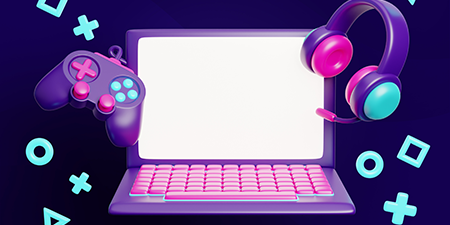Creating a shooting game in Delphi FireMonkey (FMX) involves several steps, including designing the game interface, handling user input
, managing game logic, and implementing graphics and animations. Here's a basic outline of how you can approach developing a shooting game in Delphi FMX:
-
Setup your Delphi IDE: Ensure that you have Delphi installed and configured properly.

-
Design the game interface: Use the FMX designer to create the user interface of your game. This may include elements such as the player's spaceship, enemies, bullets, score display, and any other relevant elements.
-
Handle user input: Implement event handlers to detect user input, such as keyboard or touch events, to control the player's movements and shooting actions.
-
Implement game logic: Write the code that controls the game's behavior, including the movement of enemies, collision detection between bullets and enemies, scoring, and determining when the game ends.
-
Graphics and animations: Use FMX components to display graphics and animations for the game elements. You can use built-in FMX features for basic animations or explore third-party libraries for more advanced effects.
-
Audio: Add sound effects and background music to enhance the gaming experience.
-
Testing and debugging: Test your game thoroughly to identify and fix any bugs or issues.
Here's a very basic example to get you started with a simple shooting game:
unit MainForm;
interface
uses
System.SysUtils, System.Types, System.UITypes, System.Classes, System.Variants,
FMX.Types, FMX.Controls, FMX.Forms, FMX.Graphics, FMX.Dialogs, FMX.Objects,
FMX.StdCtrls, System.Math.Vectors, FMX.Controls.Presentation;
type
TForm1 = class(TForm)
Timer1: TTimer;
procedure FormCreate(Sender: TObject);
procedure FormKeyDown(Sender: TObject; var Key: Word; var KeyChar: Char;
Shift: TShiftState);
procedure Timer1Timer(Sender: TObject);
private
{ Private declarations }
Player: TRectangle;
procedure MovePlayer(Direction: Integer);
procedure Shoot;
public
{ Public declarations }
end;
var
Form1: TForm1;
implementation
{$R *.fmx}
procedure TForm1.FormCreate(Sender: TObject);
begin
Player := TRectangle.Create(Self);
Player.Parent := Self;
Player.Fill.Color := TAlphaColors.Blue;
Player.Width := 50;
Player.Height := 50;
Player.Position.X := (ClientWidth - Player.Width) / 2;
Player.Position.Y := ClientHeight - Player.Height - 50;
end;
procedure TForm1.FormKeyDown(Sender: TObject; var Key: Word; var KeyChar: Char;
Shift: TShiftState);
begin
case Key of
vkLeft: MovePlayer(-10);
vkRight: MovePlayer(10);
vkSpace: Shoot;
end;
end;
procedure TForm1.MovePlayer(Direction: Integer);
begin
Player.Position.X := Player.Position.X + Direction;
end;
procedure TForm1.Shoot;
var
Bullet: TRectangle;
begin
Bullet := TRectangle.Create(Self);
Bullet.Parent := Self;
Bullet.Fill.Color := TAlphaColors.Red;
Bullet.Width := 5;
Bullet.Height := 10;
Bullet.Position.X := Player.Position.X + Player.Width / 2 - Bullet.Width / 2;
Bullet.Position.Y := Player.Position.Y - Bullet.Height;
Timer1.Enabled := True;
end;
procedure TForm1.Timer1Timer(Sender: TObject);
begin
for var I := 0 to Self.ComponentCount - 1 do
if Components[I] is TRectangle then
if TRectangle(Components[I]).Fill.Color = TAlphaColors.Red then
TRectangle(Components[I]).Position.Y := TRectangle(Components[I]).Position.Y - 5;
end;
end.
In this example, the game window has a player-controlled rectangle that can move left and right with the arrow keys. Pressing the space bar creates a red rectangle that moves upwards, simulating shooting.
This example is very basic and lacks many features such as collision detection, enemy movement, scoring, and sound effects. You can enhance it by adding these features according to your game design.
If you like the article and in need fo such a service, please dont hesitate to contact us



